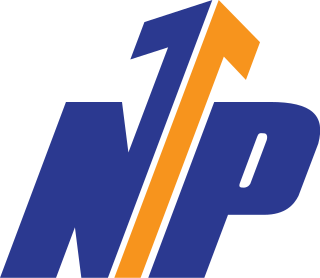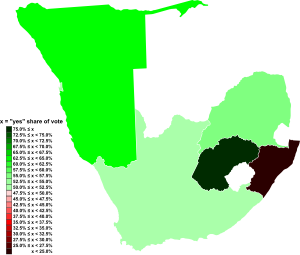
The Union of South Africa was the historical predecessor to the present-day Republic of South Africa. It came into existence on 31 May 1910 with the unification of the Cape, Natal, Transvaal, and Orange River colonies. It included the territories that were formerly a part of the South African Republic and the Orange Free State.

Afrikaner Calvinism is a cultural and religious development among Afrikaners that combined elements of seventeenth-century Calvinist doctrine with a "chosen people" ideology based in the Bible. It had origins in ideas espoused in the Old Testament of the Jews as the chosen people.

Hendrik Frensch Verwoerd, also known as H. F. Verwoerd, was a South African politician, scholar, and newspaper editor who was Prime Minister of South Africa and is commonly regarded as the architect of apartheid and nicknamed the "father of apartheid". Verwoerd played a significant role in socially engineering apartheid, the country's system of institutionalized racial segregation and white supremacy, and implementing its policies, as Minister of Native Affairs (1950–1958) and then as prime minister (1958–1966). Furthermore, Verwoerd played a vital role in helping the far-right National Party come to power in 1948, serving as their political strategist and propagandist, becoming party leader upon his premiership. He was the Union of South Africa's last prime minister, from 1958 to 1961, when he proclaimed the founding of the Republic of South Africa, remaining its prime minister until his assassination in 1966.

The governor-general of the Union of South Africa was the highest state official in the Union of South Africa between 31 May 1910 and 31 May 1961. The Union of South Africa was founded as a self-governing Dominion of the British Empire in 1910 and the office of governor-general was established as the representative of the monarch. Fifty-one years later the country declared itself a republic and the historic link with the British monarchy was broken. The office of governor-general was abolished.

The National Party, also known as the Nationalist Party, was a political party in South Africa from 1914 to 1997, which was responsible for the implementation of apartheid rule. The party was an Afrikaner ethnic nationalist party, which initially promoted the interests of Afrikaners but later became a stalwart promoter and enactor of white supremacy, for which it is best known. It first became the governing party of the country in 1924. It merged with its rival, the SAP, during the Great Depression, and a splinter faction became the official opposition during World War II and returned to power. With the National Party governing South Africa from 4 June 1948 until 9 May 1994, the country for the bulk of this time was only a de jure or partial democracy, as from 1958 onwards non-white people were barred from voting. In 1990, it began to style itself as simply a South African civic nationalist party, and after the fall of apartheid in 1994, attempted to become a moderate conservative one. The party's reputation was damaged irreparably by perpetrating apartheid, and it rebranded itself as the New National Party in 1997 before eventually dissolving in 2005.

Johannes Gerhardus Strijdom, also known as Hans Strijdom and nicknamed the Lion of the North or the Lion of Waterberg, was the fifth prime minister of South Africa from 30 November 1954 to his death on 24 August 1958. He was an uncompromising Afrikaner nationalist and a member of the largest, baasskap faction of the National Party (NP), who further accentuated the NP's apartheid policies and break with the Union of South Africa in favour of a republic during his rule.
The Afrikaner Broederbond (AB) or simply the Broederbond was an exclusively Afrikaner Calvinist and male secret society in South Africa dedicated to the advancement of the Afrikaner people. It was founded by H. J. Klopper, H. W. van der Merwe, D. H. C. du Plessis and the Rev. Jozua Naudé in 1918 as Jong Zuid Afrika until 1920, when it was renamed the Broederbond. Its influence within South African political and social life came to a climax with the 1948-1994 rule of the white supremacist National Party and its policy of apartheid, which was largely developed and implemented by Broederbond members. Between 1948 and 1994, many prominent figures of Afrikaner political, cultural, and religious life, including every leader of the South African government, were members of the Afrikaner Broederbond.

From 1910 to 1961 the Union of South Africa was a self-governing country that shared a monarch with the United Kingdom and other Dominions of the British Empire. The monarch's constitutional roles were mostly delegated to the Governor-General of the Union of South Africa.

Apartheid was a system of institutionalised racial segregation that existed in South Africa and South West Africa from 1948 to the early 1990s. Apartheid was characterised by an authoritarian political culture based on baasskap, which ensured that South Africa was dominated politically, socially, and economically by the nation's minority white population. In this minoritarian system, there was social stratification, where white citizens had the highest status, followed by Indians and Coloureds, then Black Africans. The economic legacy and social effects of apartheid continue to the present day, particularly inequality.

Sir De Villiers Graaff, 2nd Baronet, known as Div Graaff, was a South African politician who succeeded his father, Sir David Pieter de Villiers Graaff, 1st Baronet, to his baronetcy in 1931. He died in 1999 and was succeeded by his son, Sir David de Villiers Graaff, 3rd Baronet. He was the leader of the centrist United Party which was the official opposition in the then all-white South African Parliament from 1956 to 1977.

General elections were held in South Africa on 26 May 1948. They represented a turning point in the country's history, as despite receiving just under half of the votes cast, the United Party and its leader, incumbent Prime Minister Jan Smuts, were ousted by the Herenigde Nasionale Party (HNP) led by D. F. Malan, a Dutch Reformed cleric.

The South Africa Act 1909 was an Act of the Parliament of the United Kingdom that created the Union of South Africa out of the former Cape, Natal, Orange River, and Transvaal colonies. The Act also allowed for potential admission of Rhodesia into the Union, a proposal rejected by Rhodesian colonists in a 1922 referendum. The draft proposal was supported by the four colonial parliaments, but was opposed by Cape Colony premier W. P. Schreiner, who raised concerns that it would strip rights from non-white South Africans.

Afrikaner nationalism is a nationalistic political ideology created by Afrikaners residing in Southern Africa during the Victorian era. The ideology was developed in response to the significant events in Afrikaner history such as the Great Trek, the First and Second Boer Wars and opposition to South Africa's entry into World War I.
The Union Federal Party was a relatively liberal white South African party that broke away from the United Party after the 1953 election. It never gained any seats in Parliament, and ceased to exist in 1960.

Jacob Albertus Marais was an Afrikaner nationalist thinker, author, politician, Member of Parliament, and leader of the Herstigte Nasionale Party (HNP) from 1977 till his death in 2000.

Eric Hendrik Louw was a South African diplomat and politician. He served as the Minister of Finance from 1954 to 1956, and as the Minister of Foreign Affairs from 1955 to 1963.

The Constitution of 1961 was the fundamental law of South Africa for two decades. Under the terms of the constitution South Africa left the Commonwealth and became a republic.

The "Wind of Change" speech was an address made by British Prime Minister Harold Macmillan to the Parliament of South Africa on 3 February 1960 in Cape Town. He had spent a month in Africa in visiting a number of British colonies. When the Labour Party was in government from 1945 to 1951, it had started a process of decolonisation, but the policy had been halted or at least slowed down by the Conservative governments since 1951. Macmillan's speech signalled that the Conservative Party, which formed the British government, would no longer impede independence for many of those territories.

Henry Allan Fagan, QC was the Chief Justice of South Africa from 1957 to 1959 and previously a Member of Parliament and the Minister of Native Affairs in J. B. M. Hertzog's government. Fagan had been an early supporter of the Afrikaans language movement and a noted Afrikaans playwright and novelist. Though he was a significant figure in the rise of Afrikaner nationalism and a long-term member of the Broederbond, he later became an important opponent of Hendrik Verwoerd's National Party and is best known for the report of the Fagan Commission, whose relatively liberal approach to racial integration amounted to the Smuts government's last, doomed stand against the policy of apartheid.
Lodewicus Johannes du Plessis (1897-1968) was a South African academic, alternative Afrikaner political philosopher, and Calvinist.






















